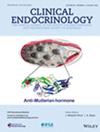How Does Thyroid Hormone Profile Differ on and Off Replacement Treatment?
Abstract
Introduction
There continues to be much discussion around optimisation of thyroid hormone status in hypothyroid individuals. We here looked the way that free T4(FT4) and thyroid-stimulating hormone (TSH) related to each other in a large laboratory sample of people who underwent a thyroid function test (TFT), split between those on levothyroxine replacement (monitoring test) and those who underwent a test to check for thyroid hormone imbalance (diagnostic test; not on levothyroxine).
Methods
TFT test (FT4/TSH) results were extracted from the Salford Royal Hospital Laboratory Information Management System during 2009–2012. This was a single site study. Requests includes a tick box for ‘on levothyroxine’ (yes or no). To minimise comorbidity effects, only samples taken in General Practices were used. For untreated patients only those who had single tests results were used; for treated patients, the median value across all their results was used. Cluster analysis considered an ellipse with centre on median values for log (TSH) and FT4 and the vertex based on 5% and 95% percentile values of both. The percentage of patients falling outside the ellipse boundary was considered for both treated and untreated populations.
Results
The total data set included 290,000 tests on 130,000 individuals. After filtering, FT4/TSH results were used from 12,006 (F 9231/M 2775; age < 60 5850/age ≥ 60 6567) treated patients with 43,846 test results. These were compared to the single results for 43,394 untreated patients (F 24,386/M19,008; age < 60 32,537/age ≥ 60 10,857). Cluster analysis showed for untreated patients, median values for TSH and FT4 were 1.8 mU/L and 15.5 pmol/L, respectively, with 24% of patient results falling outside the untreated 5%/95% percentiles. For treated patients, the median TSH was 2.3 mU/L (+30% vs. untreated) and FT4 was 18.9 pmol/L (+22% vs. untreated), with 22% of treated patients falling outside the treated 5%/95% percentiles. When considered against the untreated limits, 68% of treated results fell outside (split male 63%, female 70% and age < 60 67%, Age ≥ 60 64%).
Conclusion
The current treatment regimens of either low or high dose levothyroxine are not delivering the expected laboratory TFT profiles, with significant numbers of treated patients being well outside the expected values: both TSH and FT4 being significantly higher. This effect appears to be more prevalent in women than men.


 求助内容:
求助内容: 应助结果提醒方式:
应助结果提醒方式:


